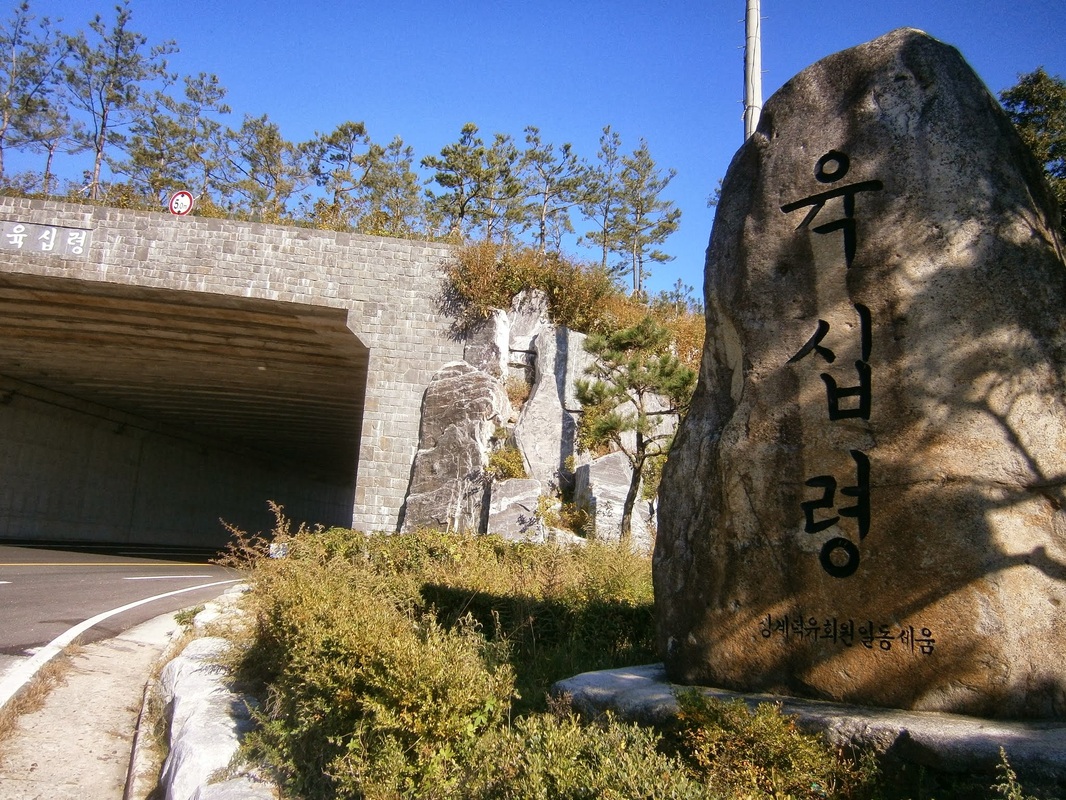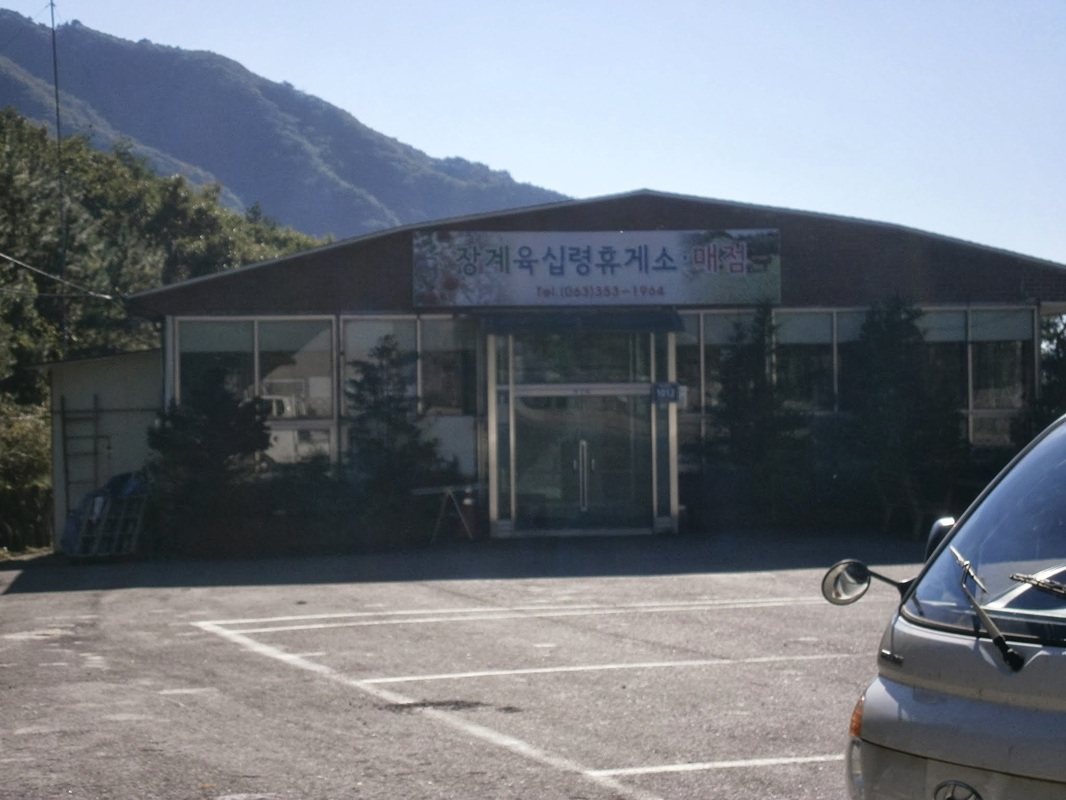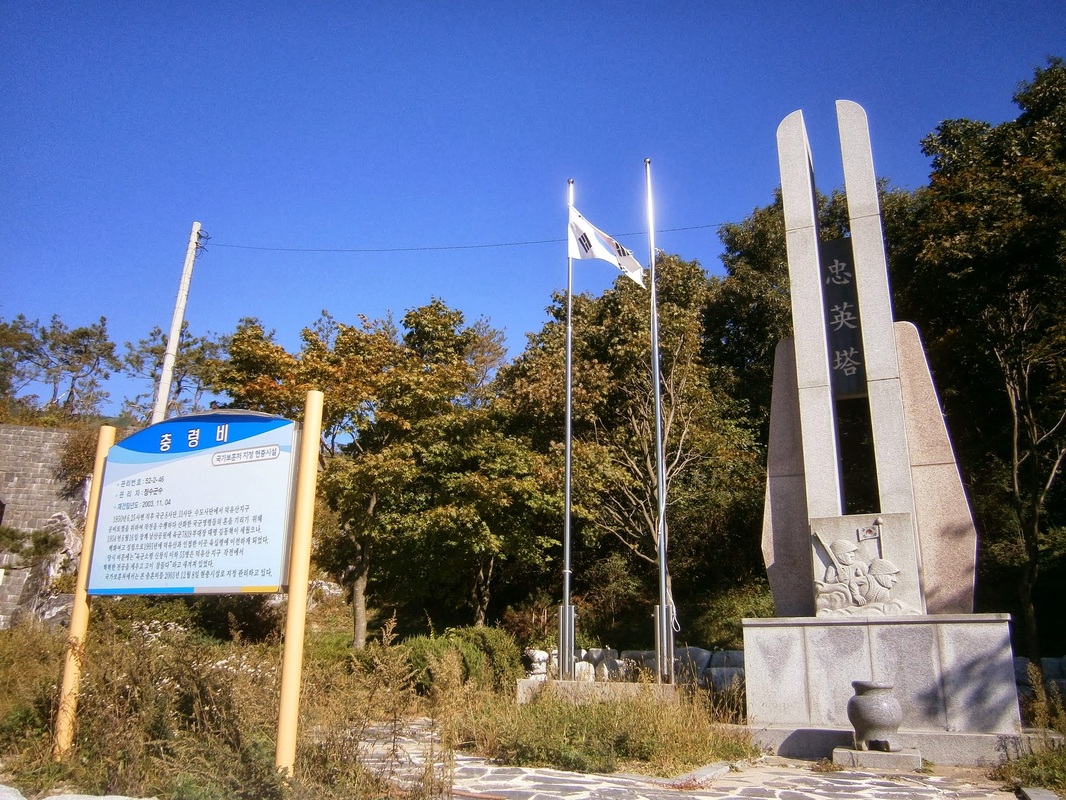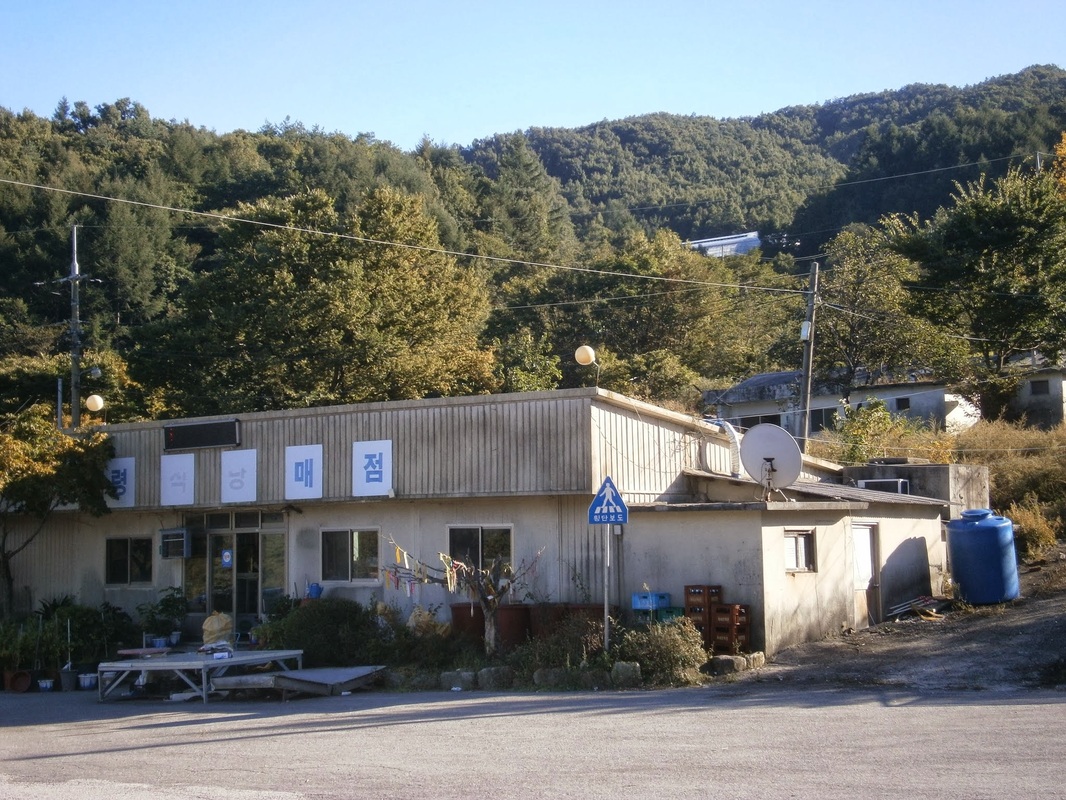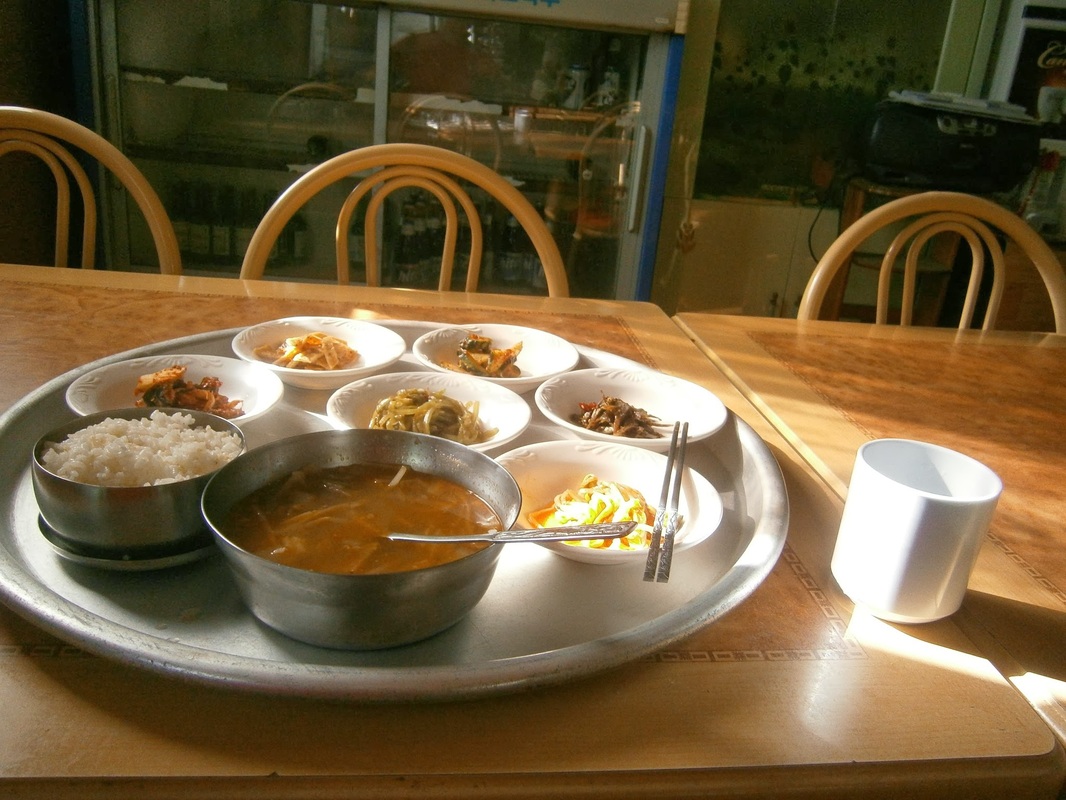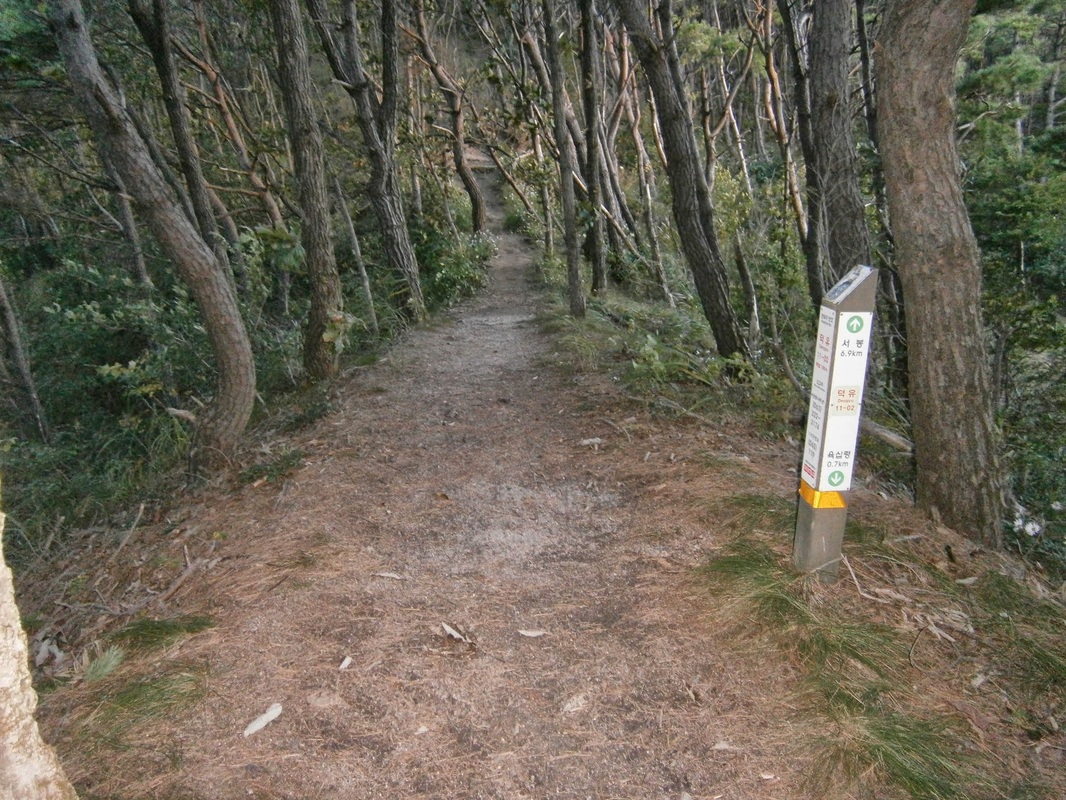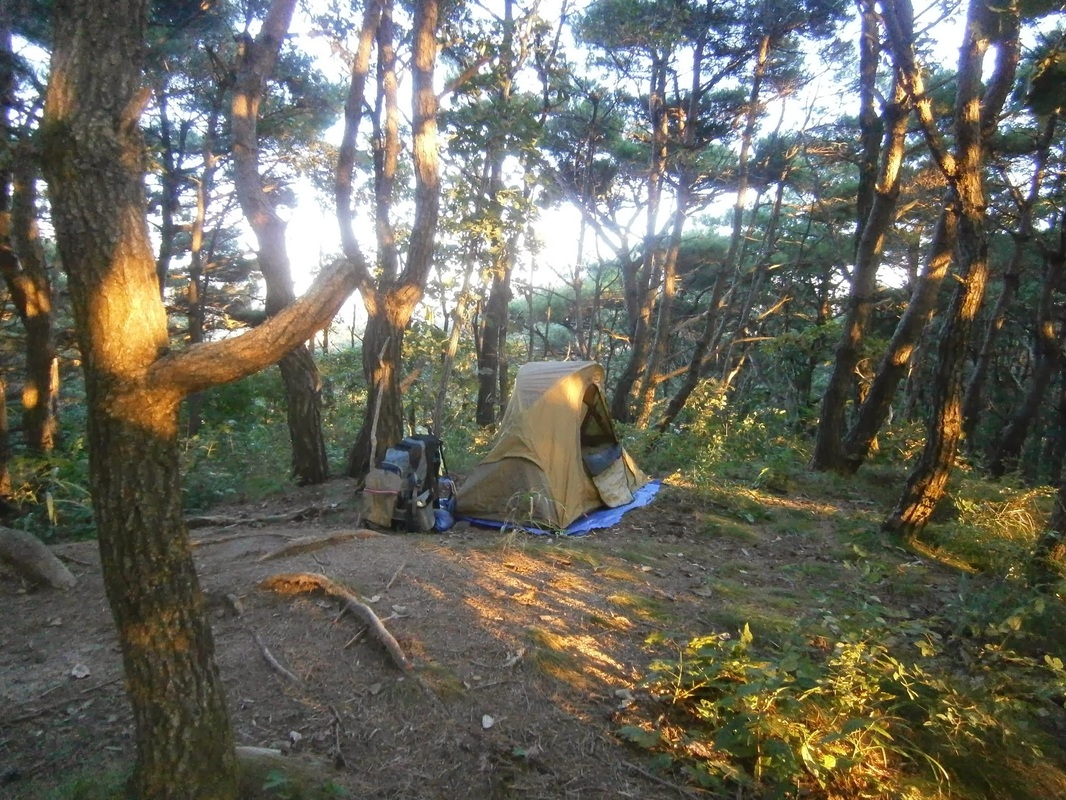These passes are often tunneled to preserve the integrity of the ridge-trail above:
I saw that there was a village on the Gyeongsang side of the pass, only a few hundred yards away from the border itself. Here’s what I want to know: Do the residents have “Gyeongsang accents”? Do they dislike Jeolla? I don’t know, but one indication of how strong the rivalry between Jeolla and Gyeongsang is (maybe), even at the border is this:
About 200 meters short of Yukship-ryeong, the trail forks, with both branches ultimately heading to the pass. The left trail, heading northwest, emerges on the Jeollabuk-do side of the pass, while the right trail heads northeast, leading to the Gyeongsangnam-do side of the pass. Both are on NH26 and are separated by about 100 meters of road. [From the Trail Guidebook]
On the western side [of Yukship Pass] is the large “Yukship-ryeong Hyugeso”, which has minbak rooms [simple rooms to sleep in], toilets, a good restaurant and a well stocked supermarket. Also in front of the hyugeso is a large two-story concrete jeongja [pavilion], which is suitable for sleeping in after sightseers have left. On the eastern side of the pass are a small supermarket and restaurant.
I was waiting for something to happen. The store I’d anticipated buying thousands-of-calories-worth of food from was dead and showed no signs of coming to life. Maybe I expected the lights to spontaneously come on. It was not to be. The only thing happening in the large, nearly-empty parking lot was that a middle-aged man was watching a dog running around. I got the idea that the man was “looking after” the closed store/restaurant. I think he was actually “just a guy”, though, using the place as a big dog park. I asked him if camping was allowed around there. He replied that it wasn’t. No store. No restaurant. No camping. No water. A big disappointment.
I made by way off to the eastern (Gyeongsang) side of the pass, where there was said to be another “huygeso” or rest-area (store, restaurant, and more). On my way to the tunnel and the other side stood a memorial. It was to the South Korean soldiers killed in the anti-communist-guerrilla campaign fought in this area during the Korean War:
These are thoughts that occur to me long after the fact. At the time I snapped the above picture, I was really hungry and out of food (except peanut butter and some “gorp”). I staggered on to the Gyeongsang side of the pass. On the Gyeongsang side, a smaller and decrepit-looking store/restaurant was (at least nominally) open for business:
I walked in, said hello, and clumsily asked “Is this a restaurant?” in my poor Korean. I really wasn’t sure whether it was a restaurant. I couldn’t see a menu anywhere. Maybe you just “had to know” what was on the menu.
Two middle-aged women, one very old woman, one middle-aged man, and one young man were inside. I soon got the feeling that all were related. Before long, this materialized on the table in front of me:
I paid 6,000 Won ($5.50) for this meal. In the front, they have a small “store” area with snack foods, chips, cookies, lots of types of ramen, and other things like tuna cans. I bought pound-cake bread and crackers, total 4,000 Won. Off I went again into the forest:
[This was mostly written in a motel at Chupung Pass on October 16th and finished on October 25th in Jeomchon]

